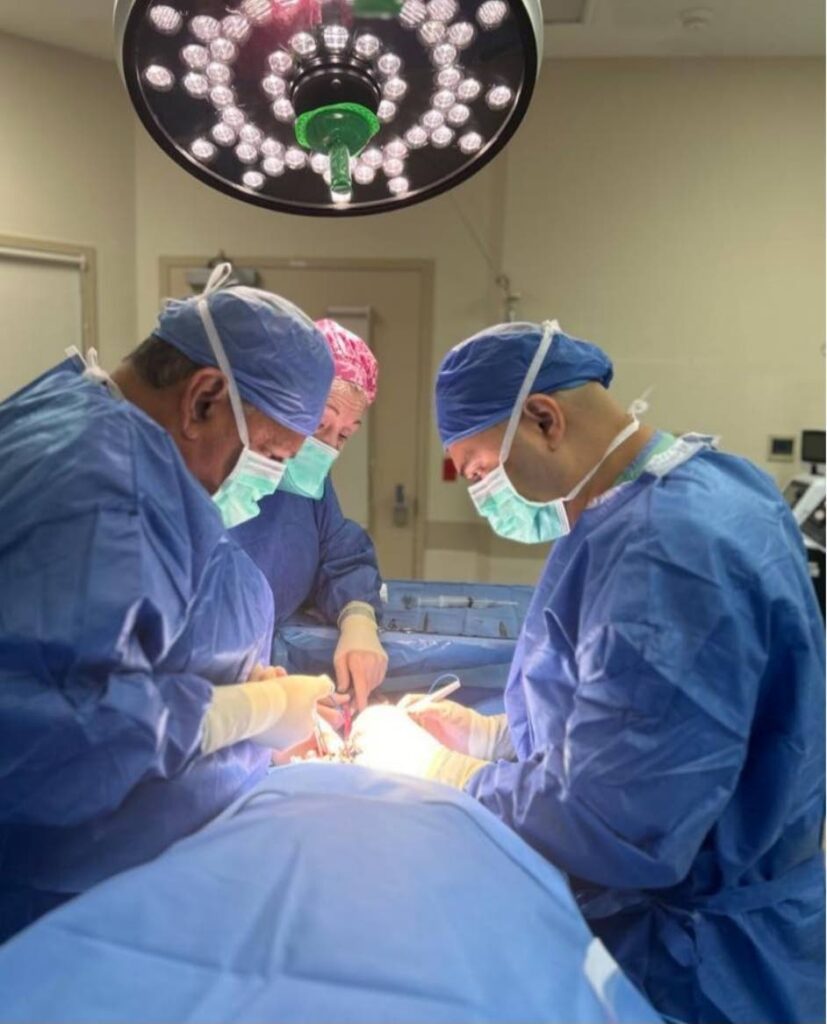Understanding testicular cancer

BAVINA SOOKDEO
April is Testicular Cancer Awareness Month, dedicated to educating the public, sharing survivor stories, and helping individuals take charge of their health when it comes to this frequently overlooked but highly treatable disease.
This type of cancer originates in the testicles, a vital part of the male reproductive system responsible for producing sperm and testosterone. It primarily affects young men between the ages of 15 and 35, making awareness and early detection critical. Since testicular cancer can have an impact on fertility and testosterone hormonal levels, as well as life expectancy, recognising the signs and seeking medical attention promptly can make a life-saving difference.
Specialist urological surgeon Dr Lall Sawh told Newsday the estimated number of new cases of testicular cancer diagnosed annually throughout Trinidad and Tobago is less than five per year.
“Although rare, testicular cancer is a life-threatening condition that primarily affects young men, including children.”
This form of cancer is characterised by the sudden, painless swelling of the testicle.
“Testicular cancer is a life-threatening emergency that develops due to malformation caused by DNA cellular changes, though the exact cause remains unknown.”
Sawh, a pioneering urologist for 45 years, has advanced urology across the Caribbean. In 1988, he performed the region’s first kidney transplant from a live donor and introduced "buttonhole" surgery to the country.
He pursued medical studies at UWI, Mona, before training in surgery in Scotland, London and completing a fellowship at the Mayo Clinic in the US. In 1998, he championed Viagra and performed the Caribbean’s first penile reconstruction. Recognised globally, Sawh has been featured in Who’s Who in Science and Technology and was awarded the Chaconia Medal (Gold) in 1993. He continues to shape the medical field and is a former UWI lecturer and examiner. He conducts his private practice in San Fernando and Port of Spain.
Sawh said one of the key risk factors for testicular cancer is undescended testes.
“The longer the testes remain undescended and are not surgically corrected, the greater the risk of cancer developing.”
He advises that any undescended testis should be surgically brought down by the age of one year, with some experts suggesting even earlier intervention.
Early detection is critical, and self-examinations play a vital role. Sawh strongly encourages men to check themselves while showering and to seek medical attention immediately if they notice any abnormalities. But he cautions, “Do not squeeze the testis, as the cancer is easily spread on manipulation.”
He also emphasises the importance of parental vigilance: “Mothers and grandmothers should gently examine the testes of young boys when bathing them.”
Testicular cancer can be detected through a combination of physical examinations, ultrasounds, blood tests for tumour markers such as human chorionic gonadotrophin, Alpha Feto protein, and lactic dehydrogenase. If diagnosed, Sawh said, “immediate radical surgery is required to remove the affected testis via the inguinal canal, through which the testis travelled from the abdominal cavity to the scrotum.
"The testis should never be manipulated for fear of spread.”
He stressed, “The testis must never be biopsied as this will result in tumour spread via the biopsy site.”
Following surgery, as soon as the diagnosis is confirmed by a pathologist in the lab, treatment typically includes cisplatinum-based chemotherapy plus other chemotherapeutic combinations, which has a high success rate when administered early. In cases where the cancer has spread to lymph nodes, additional chemotherapy, radiotherapy, or lymph node resection will be required as salvage therapy.
“Caught early, testicular cancer is usually curative once appropriate therapy is executed.”
One of the challenges in addressing testicular cancer is the stigma surrounding male reproductive health.
“Some men hesitate to seek testing because they are ill-informed and not very wise,” Sawh said candidly.
“Interestingly, a lot of the cases I have seen over the years, were brought in by a clever girlfriend or wife when she discovers it.”
To combat this hesitation he advocates for greater public education through social media, print, and electronic media.
“Men need to understand that a sudden enlargement or lump in the testicle is cause for immediate concern and is not a sign of increasingly becoming macho.”
Support from family and friends is crucial for men undergoing treatment.
“Emotional support, especially from partners, is vital. A man can still perform sexually after treatment, though his fertility may drop.”
In some countries pre-surgical sperm banking is offered to preserve fertility.
“Men so afflicted could lose body image and sexual confidence as a testis is removed.”
Sawh is optimistic about advancements in medical research, particularly the emerging technology of micro RNA testing which could revolutionise early detection. He also believes that greater access to information through digital platforms and artificial intelligence will improve awareness and treatment options for testicular cancer in TT over the next decade.
“Be aware that testicular cancer presents with a painless enlargement of the testis with no other signs in the early stages. Do not ignore any testicular lump or swelling or any enlargement that has been noticed. Do not massage or squeeze as this cancer is easily spread. Be aware and when in doubt, consult your doctor.”
With increased awareness, early detection, and timely treatment, testicular cancer can be beaten. Men are encouraged to take charge of their health.

Comments
"Understanding testicular cancer"